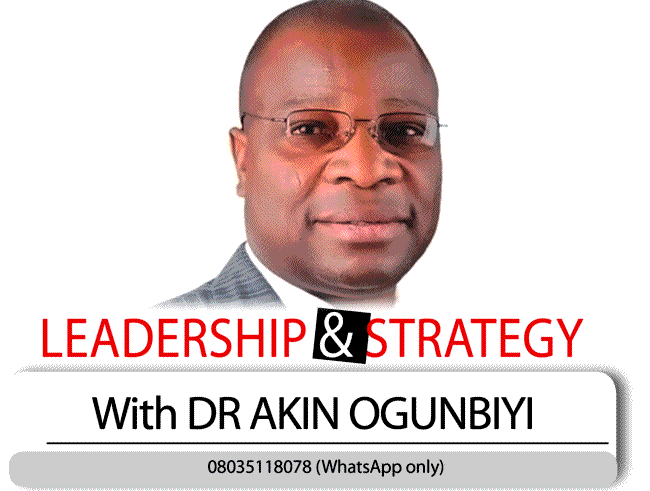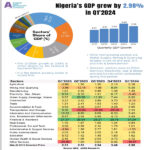Today’s business organisation can be described as a complex adaptive system with a dynamic network of interactions. Leaders, employees, resources and other tangibles as well as intangibles combine with one another and impact themselves in big and small ways to create beneficial value. Products and services that satisfy needs.
Sharika Kaul describes leadership as orchestrating or choreographing an output that moves an organisation towards the vision by “inciting, exciting and pushing the team”. Jim Heskett says leadership is “the mix of control, delegation and theater”. However, Nigerian author, Wale Olawore sees leadership in the context of organisation’s “course and priorities”. “Talk about leadership? I see one who wants to lift me up and help me achieve my desire in life”, he pointed out.
In this write-up, I will focus succinctly (but briefly) on actions leaders must take in the present challenging operating environment to achieve sustainable success.
First, is the Act Network Theory (or Actant) which emphasizes the point of view that we should give attention to roles, not just people. Remember the saying that “Humans shape the tools and subsequently the tools impact humans”. To achieve expected outcomes, leaders must carefully manage actions that influence and shape the system. Using knowledge management as strategic goal, team’s actions must generate and produce expected values. Organisations must be managed from the perspective of team members delivering their very best.
Improvements must be carried out on “team by team” basis. Leaders must break it down to the team (even function and unit) level. See teams that are underperforming and those that are thriving. Tailor solutions to improve the underperforming teams, while at the same “challenging” the thriving ones to do more. Underperforming teams must not be allowed to “bog down others”. Build individual “deliver your-best-always” team culture. You must keep track of each team frequently (not once a year during appraisal exercises) to improve overall engagement.
A useful tool to consistently improve performance through positive actions and of course, outcomes, is the “anecdotal survey”. Short and real incident or person conversation with team members. Organisation’s culture is the average of individual employee’s behaviour, attitudes and dispositions (tendencies and inclinations). There must also be regular “check-ins” with teams to track performance, energy levels and where support is needed.
Results-based Accountability or RBAs is another useful metric. We must measure the utility of values the organisation is delivering to customers. It is important we ask ourselves these questions: Are we making the difference by way of benefits to consumers? Are the processes delivering optimally and efficiently? Are we achieving the outcomes we set out to achieve? Are we achieving our purpose as an organization? How much did we do? and how well did we achieve it?
Also, in order to empower teams and boost productivity, leaders must “manage the managers, supervisors and other unit heads” effectively. Please, note the following: some managers were promoted because of their technical expertise and therefore need tools to oversee their subordinates. They must know how to manage others and learn what leadership development is about. They must know how to prioritize and not sucked into day-to-day work. They also require communication skills. They must model work place behaviors and fully imbibe the culture of accountability
There is this new strategic tool for growth known as The Predictable Profit Accelerator Framework: This must be learnt and regularly applied by middle managers to hit growth goals by going all out for profitable clients, more opportunities and of course, more inflow. They must also be fully acquainted with the tactic of “manoeuvres” which guarantees growth trajectory. This tool is characterized by grit and creativity, practical actions and value-delivering collaboration. Successful deployment of coherent manoeuvres will give the organisation an edge over competition.
Let me now briefly discuss Prof Dave Ulrich’s insights on what should be “HR’s ultimate goal”, which must be, to create a winning business in the marketplace. According to Dave, HR should be the catalyst for change by “bridging the divide between leaders, employees and the marketplace”. According to him, what guarantees the workplace are the successes in the marketplace. The biggest challenge of any business is to always get more customers. Great employee experience therefore, leads to great customer experience and then leads to market success and profitability. Human capital must therefore constantly deliver in a value chain that is characterized by creativity and innovations.
Professor Ulrich says the organisation’s HR department must compulsorily deliver on what he referred to as “HR Value logic”. That is, dynamic and sustainable human capability re-engineering which can be broken down to: Improved talent management system, Leadership development programmes, training, coaching and performance management, Workforce planning and creativity, fostering mission-vision culture value and comprehensive recruitment strategy including the support pillars for hiring and retention. Great employee experience must be personalized for individual organizations.
Let me conclude with some sales enablement KPIs that have been used effectively to track and achieve great outcomes.
Sales personnel must be trained on how to engage prospects and customers with unique and relevant prescriptions most importantly, on benefits. Managers must also regularly gauge sales’ officials’ competency and regularly update their skills.
We must track time spent on closing deals and converting them to payments. Engagement with new customers and loyal ones must be regularly reviewed to rev-up expected performance. Also, how long does it take for prospects to become customers. Let us in addition manage “sales cycle length” and “deal velocity”.
Winning rate of sales personnel must be regularly augmented with coaching and real life stories.
Do you know that the Net Promoter Score is a critical measure on how the organisation is preventing churn and creatively ensuring loyalty? This metric is important for us to know how well we are doing with customer relationships (ROR: Return on Relationships) and how we are also enabling customer satisfaction.
ALSO READ: Workers’ welfare: Ibadan poly staff unions demand Oyo govt’s immediate action
WATCH TOP VIDEOS FROM NIGERIAN TRIBUNE TV
- Let’s Talk About SELF-AWARENESS
- Is Your Confidence Mistaken for Pride? Let’s talk about it
- Is Etiquette About Perfection…Or Just Not Being Rude?
- Top Psychologist Reveal 3 Signs You’re Struggling With Imposter Syndrome
- Do You Pick Up Work-Related Calls at Midnight or Never? Let’s Talk About Boundaries







